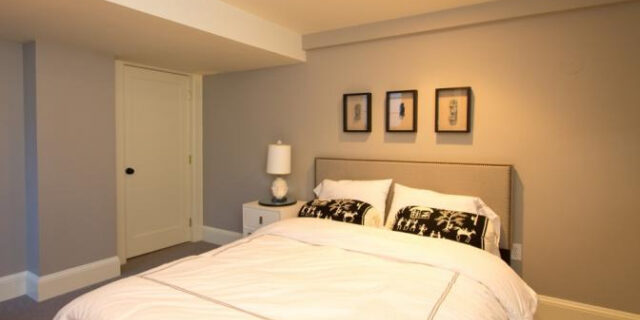In recent years, Portland homeowners have been coming to see the benefits of painting an accent wall. The most common place to do this has typically been living rooms, dining rooms or kitchens in an open-concept home. Accent walls look great in these places, but there are more areas of the home that could benefit from an accent wall. So, what about it: should you paint an accent wall in your master bedroom?
What Are the Benefits of an Accent Wall?
An accent wall allows you to add an extra color to your room, giving variety and flavor to the space. It also gives you the opportunity to use a bolder color in part of the room, without overwhelming the space (as might occur if you used that bold color on all of the walls). Finally, an accent wall gives you the ability to draw attention towards a specific part of the room, making a focal point.
Why Put an Accent Wall in My Bedroom?
As attractive as your bedroom might be, when you look at it objecively, it is basically a simple box. There is usually a plain ceiling above, a solid color carpet or wood-patterned floor below, and then four painted walls. While this can be done with great style, and all kinds of decorative touches can be added, and accent wall might still be the touch you need to make the room really pop!
An accent wall in your bedroom changes the sense of balance in the room, immediately breaking our unconscious expectation that all four walls are always the same. It also turns your walls from a background feature that we may never pay attention to, into an asset that draws the eye. An accent wall will certianly draw attention to itself, but it will also cause you to notice the non-accented walls more because of the contrast.
Where Should the Accent Wall Go?
Because an accent wall affects the balance of the room, it is important that it go in a place that feels right. The most logical place would typically be behind the headboard of your bed, or the wall opposite this. This is not an ironclad rule, but it is a suggestion you will want to at least give serious thought to.
Choose a wall that is not hidden behind lots of curtains or large paintings, a wall that has a good amount of surface space (rather than being interrupted by several doors and windows). Finally, it needs to be a wall with clear and logical borders, which may not be the case if you have a walk-in closet or master bath that shares a wall with the rest of the room.
What Color Should I Paint My Accent Wall?
Since your bedroom is self-contained (as in, not clearly visible from other parts of the house), you can be very creative in your color choice. It only has to harmonize with the bedroom, and not the other parts of the house. Here are some thoughts for choosing your accent wall color:
- You usually want a darker color than your other walls. Unless your walls are already quite dark; then choose a lighter color.
- You can choose a darker shade of the same color as your other walls. Try two shades darker for a pleasing contrast.
- You could use a color that exists somewhere else in your room, like a pillow, or a chair, or a painting, or a specific color in your multi-colored rug. Just don't choose a color from an item that sits in front of your accent wall. For example, don't make your accent wall red to match the red curtains on that same wall, or the red armchair in front of that wall.
- If your other walls are a neutral tone, go with a bold color for your accent. Try a burgundy, or royal blue, or forest green. Or go with a rich, dark grey. Whatever color you choose, remember that it will help set a mood in the room, so pick a color with energy that feels good!
- Another idea for adding depth and interest to the room is to use a patterned wallpaper on the accent wall
House Painting Services in the Portland Area
Sundeleaf Painting has been serving Portland, Oregon and the surrounding communities since 1930. For three generations we have brought beauty and longevity to Portland homes, and we would love to do the same with yours.









